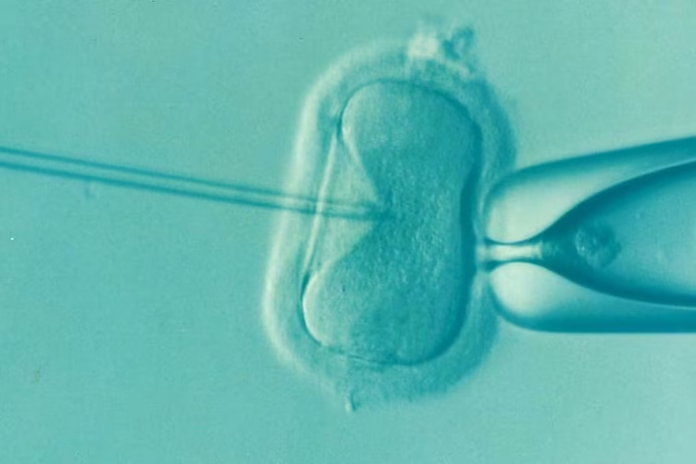On June 5, Monash IVF’s Clayton laboratory in Melbourne mistakenly transferred an embryo from the patient’s own eggs instead of the embryo created with her partner’s sperm, the company disclosed in an ASX announcement. The error came to light immediately on the operating table when clinicians noticed the embryo code did not match the treatment plan. Monash IVF has extended its “sincere apologies” to the couple and pledged ongoing support, while launching an internal investigation to determine how the mistake occurred.
Repeat Incident Highlights Systemic Risks
This is the second high-profile embryo error by Monash IVF in under three months. In April, a Brisbane clinic implanted another patient’s embryo into a woman, leading to the birth of a genetically unrelated child in late 2023. That case only surfaced in February 2025, when the birth mother sought to transfer her remaining embryos—and discovered they were not genetically hers. Queensland Health then audited every Monash IVF site in the state, prompting Monash IVF to commission an independent review.
Manual vs. Electronic Safeguards
While Monash IVF is rolling out a state-of-the-art electronic witness system—scanning and verifying sample barcodes in real time—the company noted that “manual witnessing” remains necessary in certain procedures. In its ASX statement, Monash IVF pledged to add “additional verification processes and patient confirmation safeguards over and above normal practice and electronic witness systems,” to restore confidence in its reproductive services.
Regulatory and Legal Fallout
Monash IVF has informed the Reproductive Technology Accreditation Committee (RTAC) and Victoria’s health regulator of the June 5 mix-up. The company also notified its insurers, expecting the incident to be covered under existing professional indemnity policies. Shares in the publicly listed provider fell 50 percent after April’s Brisbane incident; as of June 10, Monash IVF shares traded at 55 cents, down from $1.08 prior to the first disclosure.
Industry Calls for National Standards
Patient advocates and fertility experts say the back-to-back errors expose a critical regulatory gap: embryologists in Australia are not subject to national registration or licensure, unlike doctors, nurses, and midwives. “It’s inconceivable that professionals performing one of the most delicate medical procedures have no standardized registration,” said IVF patient advocate Lucy Lines. “We need statutory licensing, mandatory continuing education, and an independent code of practice for embryologists.”
Comparisons with International Practice
In New Zealand, by contrast, all embryologists must register under the Health Practitioners Competence Assurance Act. The Fertility Society of Australia and New Zealand (FSANZ) has told the ABC it supports harmonizing Australia’s approach to ensure embryologists meet consistent competency standards and adhere to continuing professional development requirements.
Patient Safety and Public Trust
Consultant fertility specialist Associate Professor Alex Polyakov of Genea Fertility described the repeat error as “profoundly troubling,” though he emphasized that such mix-ups remain exceptionally rare across four decades of IVF in Australia. “These incidents are statistical outliers,” he said, “but their ethical and emotional impact is enormous. We must learn from them to strengthen safeguards rather than erode public trust.”
Federal Health Minister Seeks Immediate Action
On June 10, Federal Health Minister Mark Butler announced he has placed assisted reproductive technology (ART) regulation on the agenda for Friday’s meeting of state and territory health ministers in Melbourne. “It is incredibly distressing that this has happened again,” Butler said. “I expect Monash IVF’s independent review to publish its findings swiftly, and we will consider national reforms to protect patients.”
Next Steps for Monash IVF
Monash IVF has engaged an external expert panel to review both incidents, assess laboratory procedures, and recommend systemic changes. These measures include:
- Mandatory dual verification (machine plus second human sign-off) at critical process points
- Accelerated rollout of electronic witnessing across all clinics
- Annual external audits of embryo handling
- Enhanced patient briefing on error prevention protocols
Implications for Patients and Providers
Approximately 60,000 Australians use IVF annually; around 30 percent of Australian women rely on assisted conception. For couples undergoing treatment, these errors underscore the importance of transparency and robust quality control. “Patients entrust their deepest hopes—and all their savings—to fertility clinics,” said Lines. “They deserve airtight processes and professional accountability at every stage.”
Looking Ahead: Reform and Recovery
The twin mix-ups may ultimately precipitate overdue reform in Australia’s thriving ART industry. Options under consideration include:
- Establishing a national Embryology Registration Board
- Amending the Assisted Reproductive Treatment Act to mandate licensure and continuing education
- Strengthening the RTAC standards and penalties for lapses
- Mandating patient consent for any manual verification steps
For Monash IVF, the road to restoring confidence will hinge on transparent communication, swift corrective action, and demonstrable improvements in safety protocols. As the sector grapples with the fallout, the central question remains: can Australia’s fertility providers ensure that no couple again receives the wrong embryo—and that every family’s dream of parenthood is safeguarded?
READ MORE: ‘What Australia Needs’: Qantas’ Chief Rival Looks to Soar Back onto ASX
